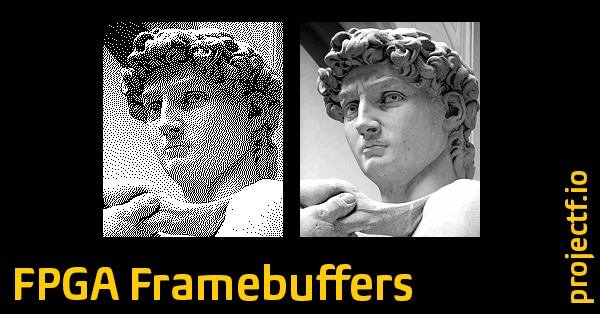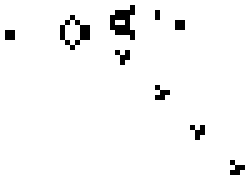Welcome back to Exploring FPGA Graphics. In the previous part, we worked with sprites, but another approach is needed as graphics become more complex. Instead of drawing directly to the screen, we draw to a bitmap, which is read out to the screen. This post provides an introduction to framebuffers and how to scale them up. We’ll also learn how to fizzlefade graphics Wolfenstein 3D style.| Project F
Welcome to Exploring FPGA Graphics. In this series, we learn about graphics at the hardware level and get a feel for the power of FPGAs. We’ll learn how screens work, play Pong, create starfields and sprites, paint Michelangelo’s David, draw lines and triangles, and animate characters and shapes. Along the way, you’ll experience a range of designs and techniques, from memory and finite state machines to crossing clock domains and translating C algorithms into Verilog.| Project F
When learning a new programming language, I like having a well defined yet non-trivial problem to solve. Conway’s Game of Life (GoL) fits this definition. It has enough depth to uncover various tradeoffs. So naturally, when I picked up Chisel hardware description language (HDL), I wanted to build Game of Life in FPGA. It turned out to be a lot more interesting than in software. This post will follow my progress from writing Chisel and Verilog code to running GoL on Digilent Arty A7 and seei...| k155la3.blog



